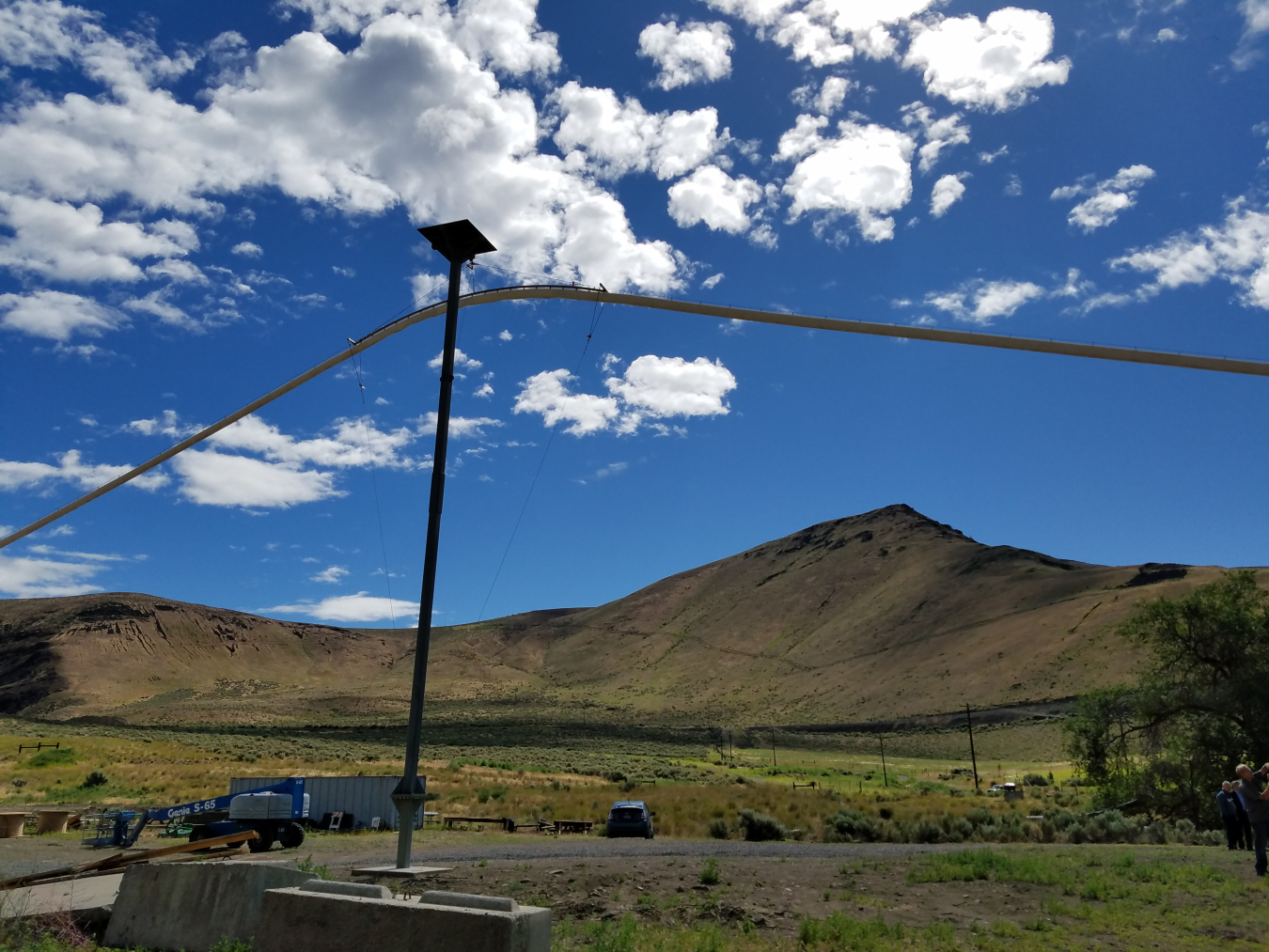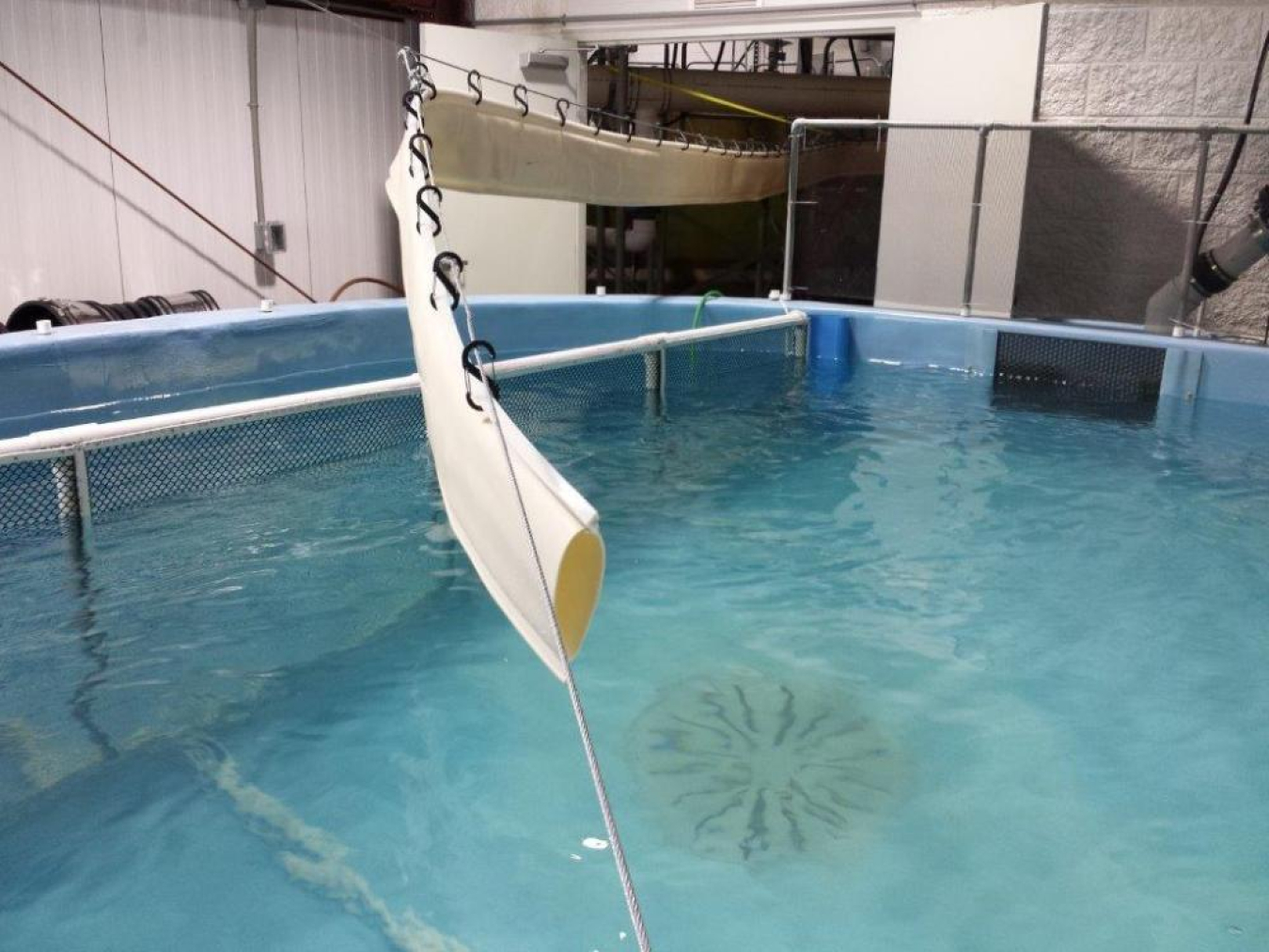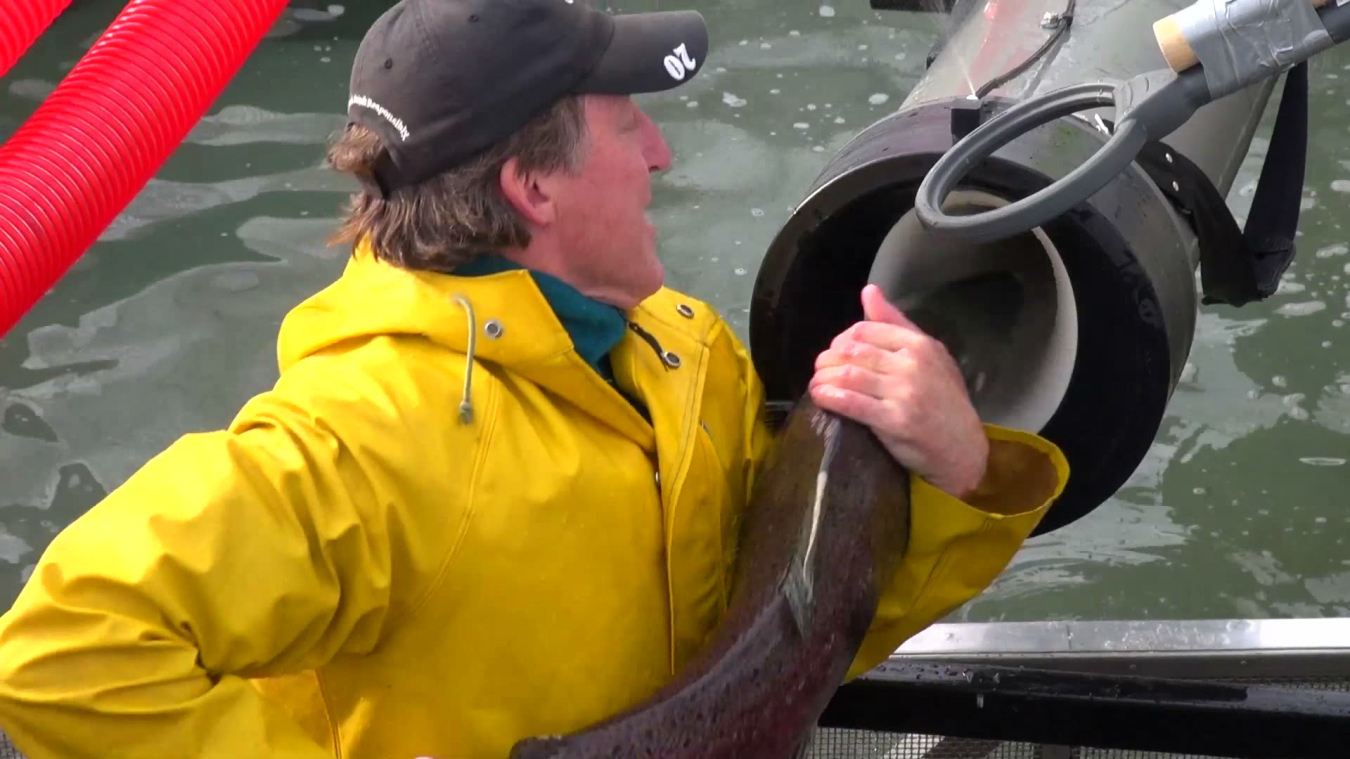The Pacific Northwest National Laboratory has worked with Whooshh Innovations on an inventive project demonstrating a fish-friendly transport syste...
Office of Energy Efficiency & Renewable Energy
October 26, 2016By Erik Hyrkas, former EERE Communications team member

This Energy Department-funded technology, the Whooshh Fish Transport System, uses lengths of flexible tube and slight differences in pressure to gently propel salmon and other fish up and around obstacles such as hydroelectric dams in waterways.
Have you ever wondered how migratory fish navigate past dams and other pieces of infrastructure in waterways? There are many different existing approaches available, including fish ladders, lifts, other bypasses, or simply trapping and trucking fish around facilities. But not all solutions work in all locations, many can be expensive and are hard to adjust or reconfigure, and the journey can still be a fairly arduous and complicated one, especially for salmon, which need to swim upstream to spawn.
So over the past several years, the technology developer Whooshh Innovations has worked with the Pacific Northwest National Laboratory (PNNL), the U.S. Department of Energy (DOE) and others on an inventive project to research, develop and demonstrate a new fish-friendly transport system. This technology uses lengths of flexible tube and slight differences in pressure to gently propel salmon and other fish up and around obstacles such as hydroelectric dams in waterways.
In fact, this week Whooshh’s Fish Transport System will be on display at the U.S. Department of Energy headquarters in Washington, D.C. The event, titled "WHOOSHH Innovations: Fish Passage System Demonstration," will be held on Thursday, Oct. 27. During the event, the Small Business Voucher Pilot awardee will demonstrate how the system works and take questions about completed and planned future research. The system (originally adapted from a technology used to transport delicate pieces of fruit around orchards without bruising) has been under development for more than three years, and has been the subject of several research projects, some supported by the Energy Department and its national labs.
In 2014, PNNL investigated any potential impacts of the Whooshh system on fish by using 40 ft and 250 ft lengths of tubing to transport Chinook salmon at a Richland, Washington, spawning site. According to PNNL’s study published in the Journal of Fish and Wildlife Management, the effects of passage through the Whooshh Fish Transport System was comparable to being handled via commonly used methods that are used to transport adult salmon (i.e., trap and haul). There were no significant differences in injury rates, immune response, stress response, or gamete viability between fish that were “whooshhed” and those that experienced trap and haul.
Research like this ties back to the Water Power Technologies Office’s broad portfolio of projects aimed at responsibly maintaining and developing hydropower throughout the country as set forth by the recent Hydropower Vision Report. The Vision’s roadmap ensures that hydropower’s contributions toward meeting the nation’s energy needs are consistent with the objectives of environmental stewardship and water use management.
The current project that DOE and PNNL are engaged in with Whooshh Innovations was awarded under the Small Business Vouchers Pilot, which matches small business with a renewable energy focus with experts from five Energy Department national laboratories. The Whooshh SBV project will focus on working with environmental regulators to determine the data that they need to make decisions about deploying the Whooshh system into rivers with listed endangered species. Once that information is collected, PNNL will execute a study to collect the necessary data.
Whooshh Innovations currently has two Fish Transport Systems in operation for live fish in the U.S., and both are used in hatchery operations. Fish passage systems like these represent promising advancements for reducing the environmental impacts and mitigation costs of hydropower technologies.
Find more information about the Energy Department’s hydropower sustainability work in this blog and on our hydropower market acceleration web page.

A view of where fish exit the Whooshh Fish Transport System.

A PNNL researcher helps a salmon through Whooshh's Fish Transport System. Research has shown no significant differences in injury rates, immune response, stress response, or gamete viability between fish using Whooshh's system vs. trap and haul.

